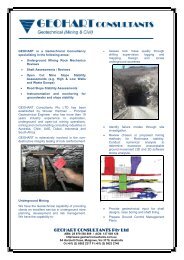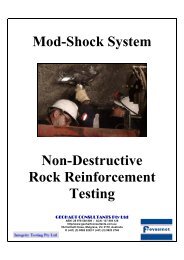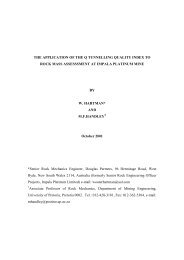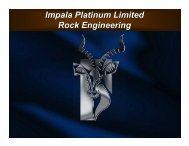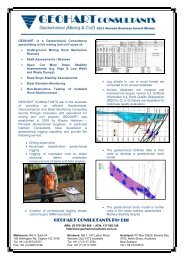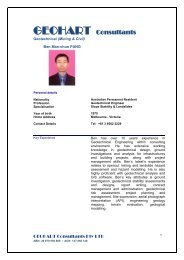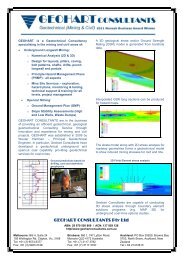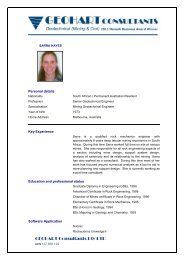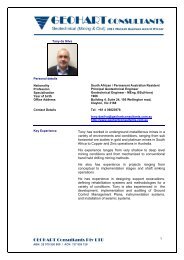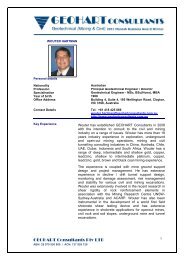Managing Geotechnical Risk through Non-Destructive Rock ...
Managing Geotechnical Risk through Non-Destructive Rock ...
Managing Geotechnical Risk through Non-Destructive Rock ...
You also want an ePaper? Increase the reach of your titles
YUMPU automatically turns print PDFs into web optimized ePapers that Google loves.
ABSTRACT<br />
Corrosion affects the performance of rock support and reinforcement at various underground mines,<br />
including the George Fisher Mine, where recent studies showed that this risk to mining operations<br />
is generally not well understood. Corrosion reduces the capacity and life expectancy of ground<br />
support and generally is undetected unless the traditional destructive pull out test is employed to<br />
detect defect bolts. Where it is still acknowledged that the pull out test has still an important role to<br />
play in determining critical bond lengths for static and quasi static ground support designs, it does<br />
not provide an underground operation with any reassurance regarding its bolt‟s integrity, which has<br />
been compromised by in-situ aggressive conditions. <strong>Non</strong>-destructive rock reinforcement calibration<br />
testing on single and twin strand cable bolts, rebar bolts and friction bolts at the George Fisher Mine<br />
enabled the testing team to detect bolts with compromised integrity in one area of the mine. The<br />
non-destructive rock reinforcement integrity testing conducted uses a complex “Stress Wave<br />
Analysis“ package based on the processing of clear seismic signals imparted into the rock<br />
reinforcement element that is being tested. The seismic signals are processed by “Fourier<br />
Transform” into various criteria which can be used to produce models of the element such as<br />
mechanical admittance, frequency spectra and velocity which are all being used in the final<br />
modelling of the rock reinforcement element under analysis. This paper highlights the enormous<br />
potential to effectively manage the geotechnical risk that corrosion presents for an underground<br />
mining operation.<br />
INTRODUCTION<br />
It has been found <strong>through</strong> previous studies that corrosion reduces the capacity and life expectancy<br />
of ground support (Villaescusa, Hassle and Thompson, 2007) and generally is undetected unless the<br />
traditional destructive pull out test (see Figure 1) is employed to detect defect bolts.<br />
If the ground support elements do not fail after employing the pull testing device the uncertainty in<br />
regard the ground support system integrity remain. It was also apparent that the hydraulic pull<br />
testing device cannot provide a good indication of the effectiveness of the fully grouted bolt<br />
following a recent review of non-destructive testing (Buys, 2008). It is however acknowledged that<br />
the pull out test has still an important role to play in determining critical bond lengths for static and<br />
quasi static ground support designs but does not provide an underground operation with any<br />
reassurance regarding its bolt‟s integrity, which could have been compromised by in-situ aggressive<br />
conditions. Thus in order to determine whether ground support elements have been compromised<br />
3



